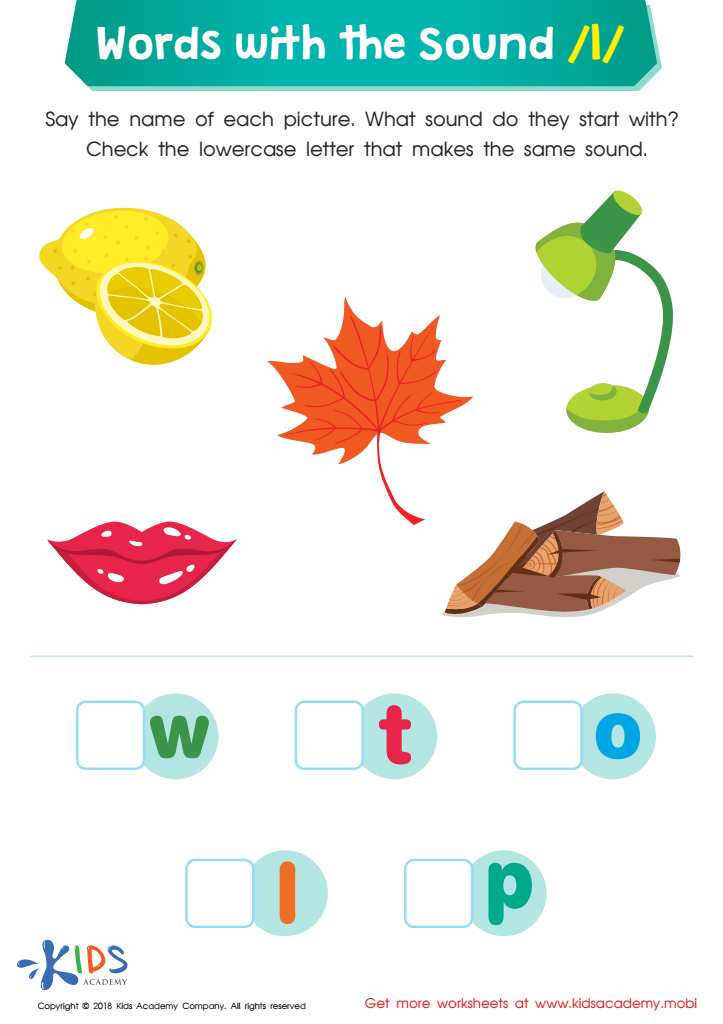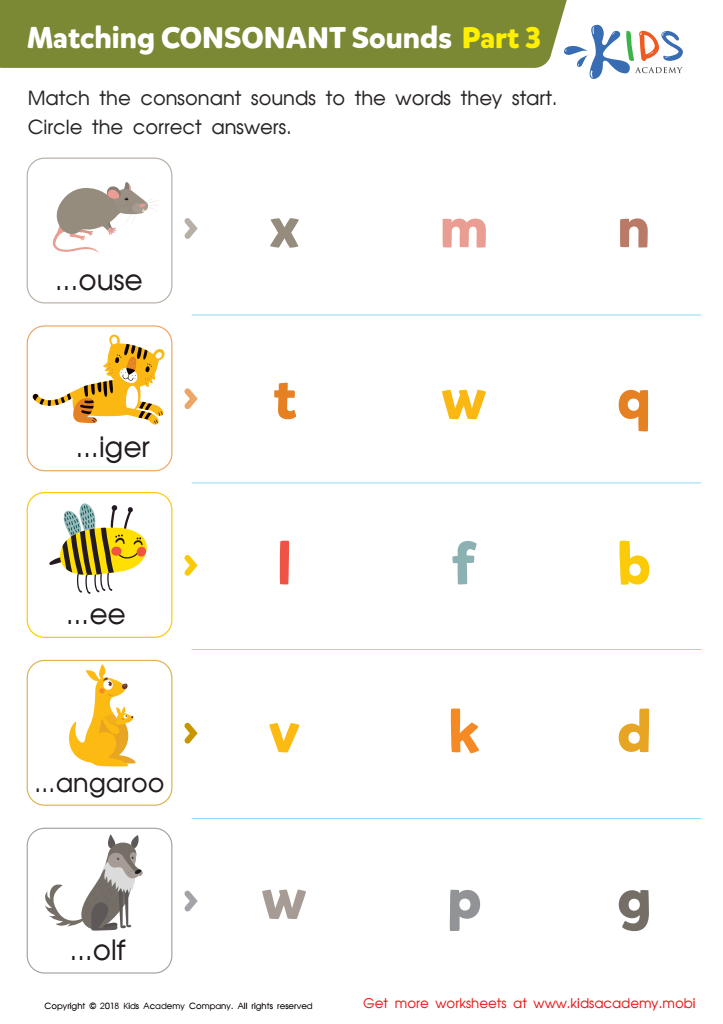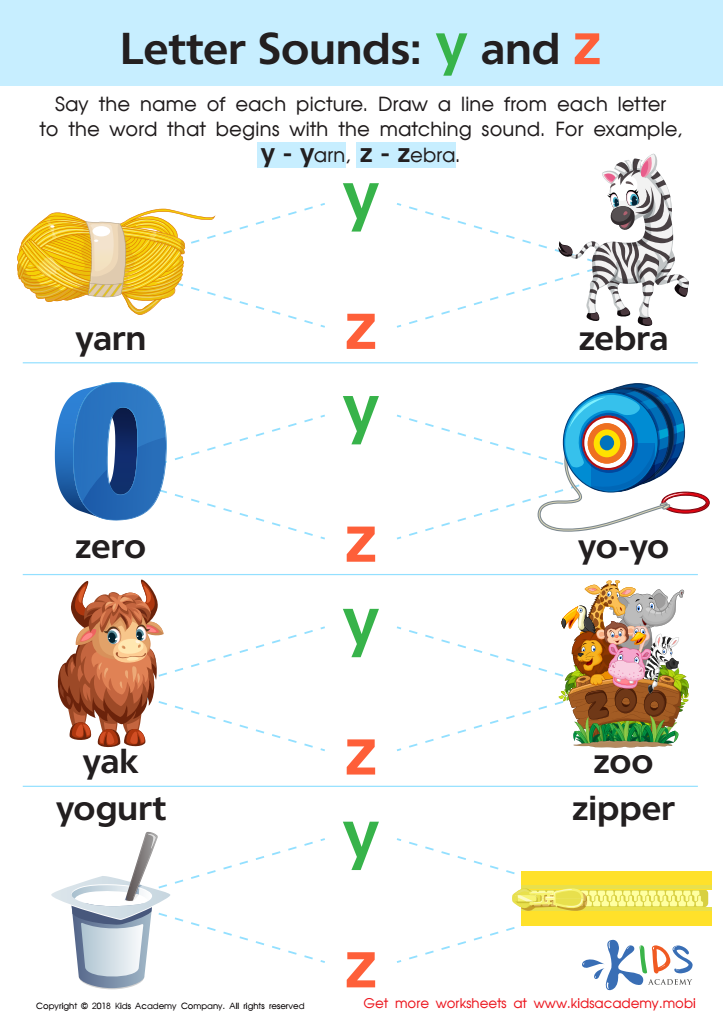Letter-sound association Phonics Worksheets for Ages 3-8
3 filtered results
-
From - To
Empower young learners to master reading with our engaging Letter-Sound Association Phonics Worksheets, crafted specifically for ages 3-8. These worksheets, designed by experienced educators, offer fun and interactive ways to connect letters with their sounds, laying the foundation for strong literacy skills. Through a variety of activities like coloring, matching, and tracing, children will develop essential phonemic awareness that is crucial for reading proficiency. Perfect for classroom or home use, our worksheets make learning to read both effective and enjoyable, nurturing confident and enthusiastic early readers. Boost your child's reading journey today!


Words with Sound L Reading Worksheet


Matching Consonant Sounds: Part 3 Worksheet


Letter Y and Z Sounds Worksheet
Letter-sound association, also known as phonics, is crucial for children aged 3-8 because it lays the foundation for successful reading and writing. At this formative age, children's brains are highly receptive to language acquisition, and learning phonics helps them understand the relationship between letters and sounds. This understanding enables them to decode new words, which significantly enhances their reading abilities and overall literacy.
For parents and teachers, emphasizing phonics provides children with essential tools for independent reading. Interpreting letters as corresponding sounds allows kids to "sound out" words, fostering not just word recognition but also comprehension skills. This is important because early literacy skills are closely linked to later academic achievement; children who grasp phonics early typically become better readers, writers, and communicators.
Furthermore, phonics instruction supports children's auditory discrimination, pronunciation, and spelling skills, forming a comprehensive literacy framework. By incorporating phonics in their teaching strategies or at-home learning activities, parents and teachers can help kids become confident readers, setting a strong educational foundation that benefits them throughout their schooling and beyond.
Investing time and effort into teaching phonics from ages 3-8 is thus crucial. It equips children with the skills they need to navigate the world of written language effectively, fostering long-term academic success and a love for reading.

 Assign to My Students
Assign to My Students



















